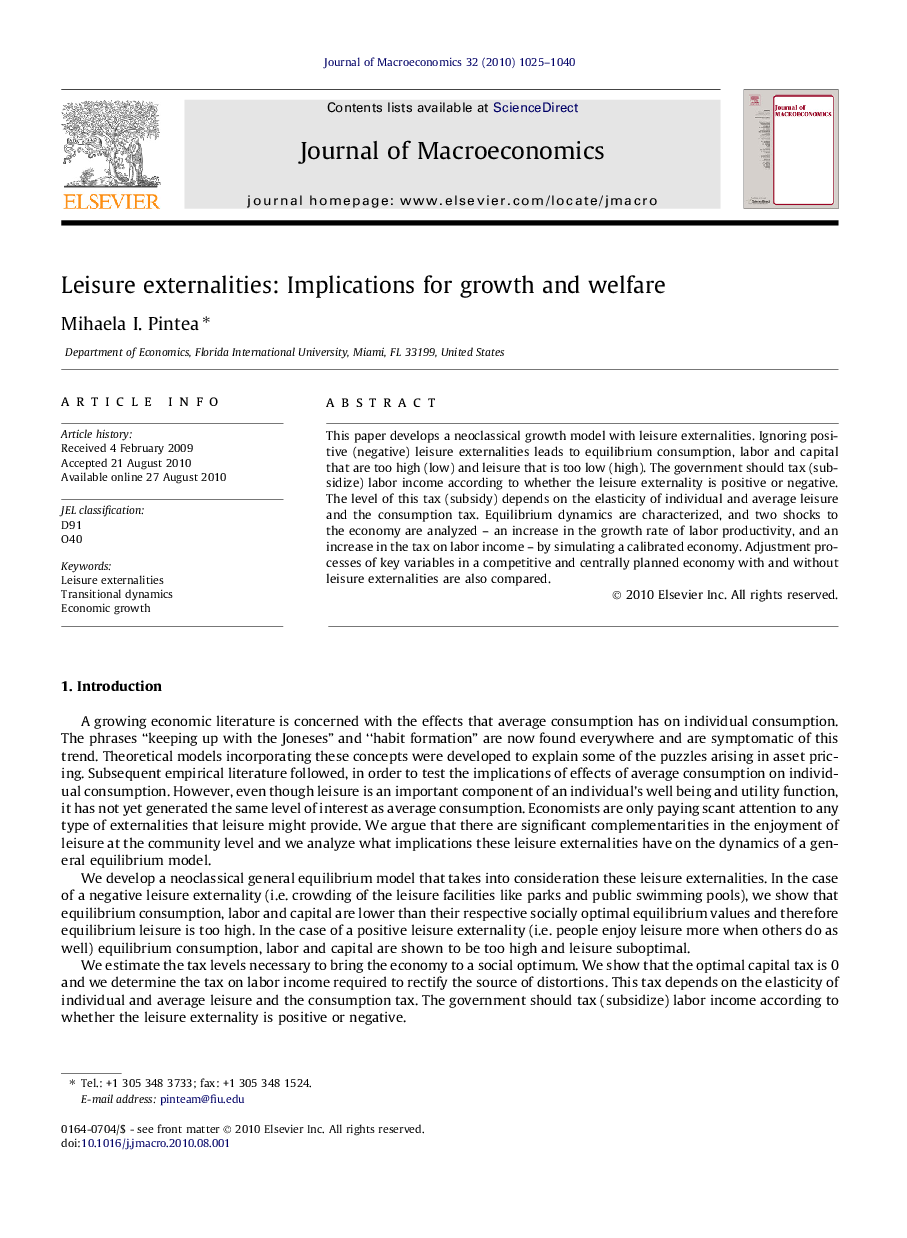| Article ID | Journal | Published Year | Pages | File Type |
|---|---|---|---|---|
| 965873 | Journal of Macroeconomics | 2010 | 16 Pages |
Abstract
This paper develops a neoclassical growth model with leisure externalities. Ignoring positive (negative) leisure externalities leads to equilibrium consumption, labor and capital that are too high (low) and leisure that is too low (high). The government should tax (subsidize) labor income according to whether the leisure externality is positive or negative. The level of this tax (subsidy) depends on the elasticity of individual and average leisure and the consumption tax. Equilibrium dynamics are characterized, and two shocks to the economy are analyzed - an increase in the growth rate of labor productivity, and an increase in the tax on labor income - by simulating a calibrated economy. Adjustment processes of key variables in a competitive and centrally planned economy with and without leisure externalities are also compared.
Related Topics
Social Sciences and Humanities
Economics, Econometrics and Finance
Economics and Econometrics
Authors
Mihaela I. Pintea,
